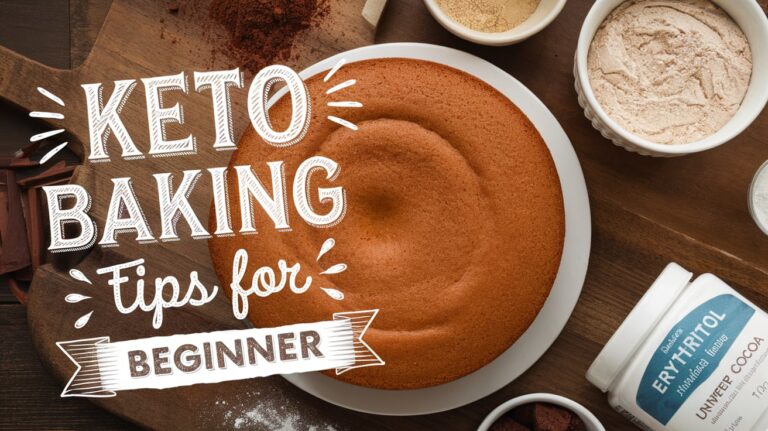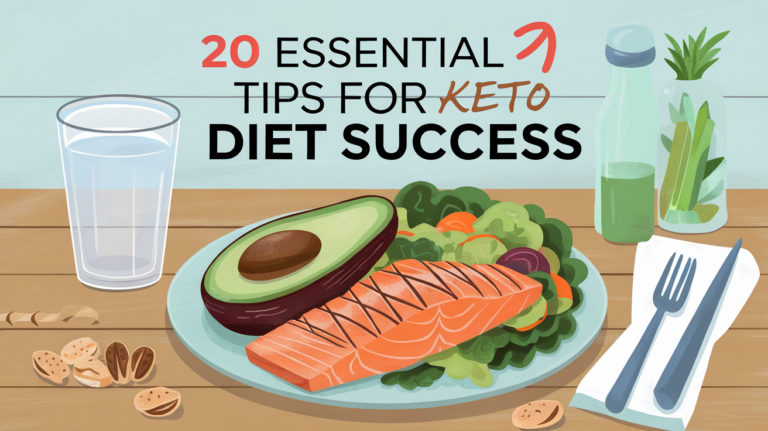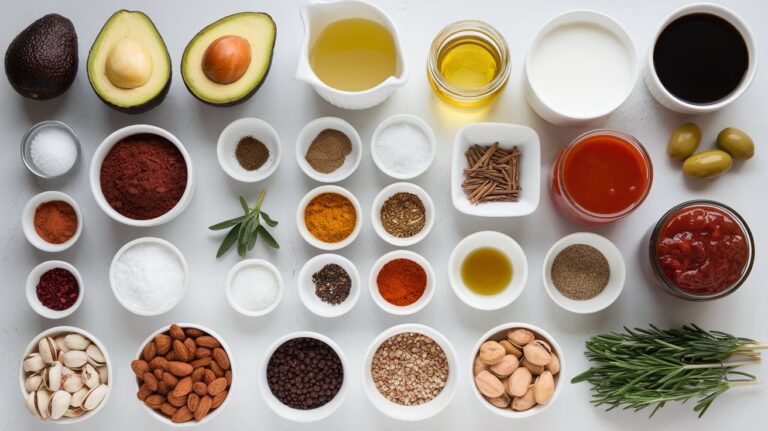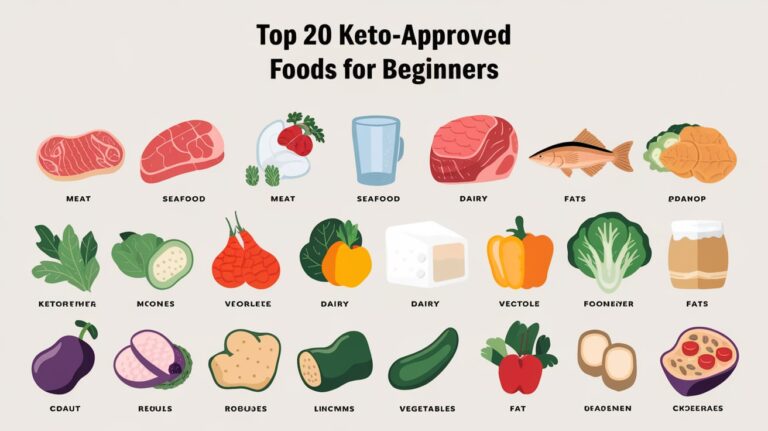Thinking about starting a keto diet? You’re not alone! I’ve been there, and I know how overwhelming it can feel at first. The ketogenic diet is a low-carb, high-fat eating plan that’s gained popularity for its potential weight loss and health benefits. By drastically reducing carbohydrate intake and replacing it with fat, your body enters a metabolic state called ketosis, where it becomes incredibly efficient at burning fat for energy.

When I first started keto, I was surprised by how quickly I saw results. Not only did I lose weight, but I also experienced increased energy and mental clarity. It’s important to note that while keto can be effective, it’s not a one-size-fits-all solution. As with any diet, it’s crucial to consult with a healthcare professional before making significant changes to your eating habits.
Ready to give keto a try? In this blog post, I’ll share my personal experiences and tips for getting started on your keto journey. From understanding what foods to eat (and avoid) to meal planning strategies, I’ve got you covered. Let’s dive in and discover how the ketogenic diet might work for you!
Key Takeaways
- The keto diet focuses on high-fat, low-carb foods to induce fat-burning ketosis
- Proper meal planning and preparation are essential for keto success
- Consult a healthcare professional before starting any new diet regimen
Getting Started with Keto

I’m excited to share how to begin your keto journey! This low-carb, high-fat diet can transform your metabolism and help you reach your health goals. Let’s dive into the basics and set you up for success.
Understanding the Basics
The keto diet revolves around shifting my body into ketosis, a metabolic state where I burn fat for fuel instead of carbs. To achieve this, I need to drastically reduce my carb intake and increase my fat consumption. I aim for about 70-75% of my daily calories from fat, 20-25% from protein, and only 5-10% from carbs.
My typical keto day includes foods like:
- Eggs and avocados
- Fatty fish and meat
- Nuts and seeds
- Leafy greens and low-carb veggies
I avoid sugary foods, grains, and starchy vegetables to keep my carb count low. This helps my body produce ketones, which become my primary energy source.
Setting Realistic Goals
When starting keto, I set clear, achievable goals. Weight loss is common, but I also focus on other benefits like improved energy and mental clarity. I start by planning my first week’s meals and stocking my kitchen with keto-friendly foods.
I track my progress using:
- A food diary app
- Regular weigh-ins
- Body measurements
- How my clothes fit
It’s important to remember that everyone’s keto journey is unique. I give my body time to adapt and don’t get discouraged by initial fluctuations. Staying hydrated and maintaining electrolyte balance helps me avoid the “keto flu” – temporary side effects as my body adjusts to burning fat.
What to Eat on a Keto Diet

I’ve found that focusing on nutrient-dense, low-carb foods is key to success on a keto diet. Let’s explore the best options for fats, proteins, and vegetables to keep you in ketosis.
Focusing on Healthy Fats
I always make sure to include plenty of healthy fats in my keto meals. Avocados are a staple for me – they’re creamy, versatile, and packed with nutrients. I love adding them to salads or making guacamole.
Nuts and seeds are great snack options. My favorites are almonds, walnuts, and pumpkin seeds. They provide a satisfying crunch and healthy fats.
I also use coconut oil and olive oil for cooking. These oils are keto-friendly and add flavor to my dishes. For a treat, I’ll have some dark chocolate (70% cocoa or higher) in moderation.
Cheese is another tasty source of fat I enjoy on keto. Hard cheeses like cheddar and gouda are particularly low in carbs.
Choosing the Right Proteins
Eggs are a keto superstar in my kitchen. They’re versatile, affordable, and packed with nutrients. I’ll often make omelets or frittatas for breakfast.
When it comes to meat, I opt for fatty cuts. Chicken thighs with the skin on are more keto-friendly than lean breast meat. I also enjoy beef, pork, and lamb.
Fish is an excellent protein source on keto. I love salmon for its omega-3 fatty acids. Other good options include tuna, sardines, and mackerel.
For vegetarian protein, I turn to tofu and tempeh. They’re low in carbs and can be prepared in many delicious ways.
Identifying Keto-Friendly Vegetables
I make sure to include plenty of low-carb veggies in my keto diet. Leafy greens like spinach, kale, and arugula are my go-to choices. They’re packed with nutrients and fiber but very low in carbs.
Cruciferous vegetables like broccoli, cauliflower, and Brussels sprouts are also keto-friendly. I love roasting them with olive oil and herbs.
Zucchini is another favorite. I use it to make zucchini noodles as a pasta substitute. Bell peppers, cucumbers, and celery are great for snacking.
I’m careful with higher-carb veggies like carrots and onions, using them sparingly. By focusing on these low-carb options, I get plenty of fiber and nutrients while staying in ketosis.
Foods to Avoid on Keto

Staying in ketosis requires careful attention to what I eat. I’ve found that certain foods can quickly derail my progress, so I’m always on the lookout for hidden carbs and sneaky sources of sugar.
Hidden Carbs to Watch Out For
I’ve learned to be wary of starchy vegetables like potatoes, corn, and peas. These can pack a serious carb punch! Grains are also off-limits for me – that means no bread, pasta, or rice. Even whole grains are too high in carbs for keto.
I avoid most fruits too, especially tropical ones like bananas and mangoes. Berries in small amounts are okay, but I’m careful not to overdo it. Beans and legumes are surprisingly carb-heavy, so I skip those as well.
Processed foods often hide added sugars and starches. I always check labels for sneaky carbs in sauces, dressings, and packaged meals.
Understanding the Impact of Sugar
Sugar is a big no-no on keto. I stay away from obvious sources like candy, soda, and baked goods. But I’ve discovered sugar lurks in unexpected places too.
Many condiments contain added sugars – ketchup, BBQ sauce, and some salad dressings are culprits. I opt for sugar-free versions or make my own.
Natural sweeteners like honey and agave aren’t keto-friendly either. Even though they’re “natural,” they’ll still spike my blood sugar.
Fruit juices are loaded with sugar, so I avoid them completely. Instead, I stick to water, unsweetened tea, and black coffee.
I’ve found that eliminating sugar has helped reduce my cravings over time. It was tough at first, but now I don’t miss it nearly as much!
Meal Planning and Prep

Planning and preparing keto meals can seem daunting at first, but it’s key to success on this diet. I’ll share some tips for creating meal plans and easy recipes to get you started.
Creating a Keto Meal Plan
I like to start my keto meal planning by focusing on low-carb veggies, healthy fats, and quality proteins. I aim for 70-75% of calories from fat, 20-25% from protein, and 5-10% from carbs.
A simple template I use:
- Breakfast: Eggs with avocado and spinach
- Lunch: Salad with grilled chicken and olive oil dressing
- Dinner: Baked salmon with roasted broccoli
I also plan for keto-friendly snacks like nuts or cheese. Meal prepping on weekends saves me time during busy weekdays. I cook large batches of proteins and veggies to mix and match throughout the week.
Easy Keto Recipes for Beginners
When I started keto, I loved simple recipes with few ingredients. Here are some of my favorites:
- Bacon and cheese frittata
- Tuna salad lettuce wraps
- Zucchini noodles with meatballs
For a quick breakfast, I make “bulletproof” coffee by blending coffee with butter and MCT oil. Dinner might be a bunless burger topped with bacon and avocado.
I keep frozen cauliflower rice on hand to pair with stir-fries or curries. For dessert, I enjoy berries with whipped cream or a square of dark chocolate.
Overcoming Challenges and Adjusting
Starting a keto diet can be tough, but I’ve got some tips to help you push through the initial hurdles. Let’s look at how to deal with keto flu symptoms and navigate social situations without derailing your progress.
Dealing with Keto Flu
When I first started keto, I experienced fatigue, headaches, and irritability – classic keto flu symptoms. To combat this, I increased my water intake and added electrolytes to my diet.
Bone broth became my go-to remedy. It’s rich in minerals and helps replenish electrolytes. I also made sure to get plenty of rest and light exercise like walks.
Intermittent fasting can actually help ease the transition. I started with a 16:8 fasting schedule, which boosted my insulin sensitivity and accelerated ketosis.
Managing Cravings and Social Situations
Cravings hit me hard in the beginning, especially for carb-heavy foods. I found that staying satiated with high-fat meals helped curb these urges.
Keeping keto-friendly snacks on hand was a game-changer for me. Some of my favorites:
- Hard-boiled eggs
- Cheese cubes
- Nuts and seeds
- Celery with almond butter
Social gatherings can be tricky. I learned to eat a small keto meal before events and focus on protein and veggie options when dining out. Don’t be afraid to ask for substitutions!
Explaining your dietary choices to friends and family can help them understand and support your journey. Remember, it’s okay to politely decline non-keto foods.





